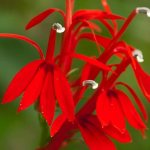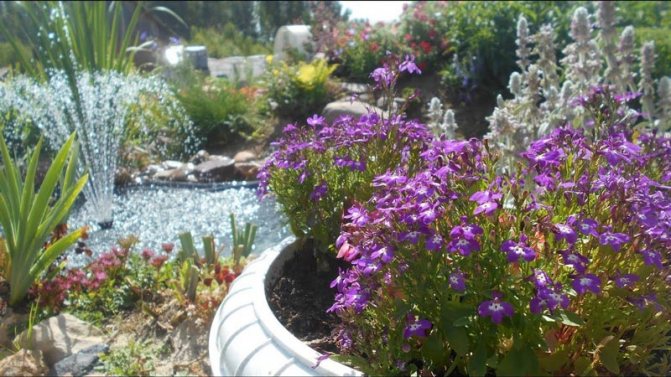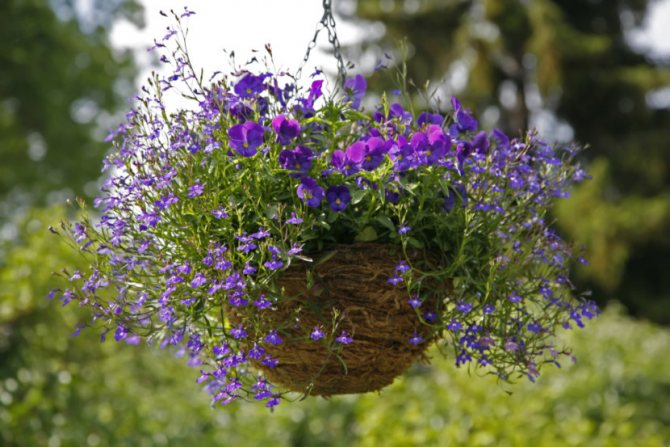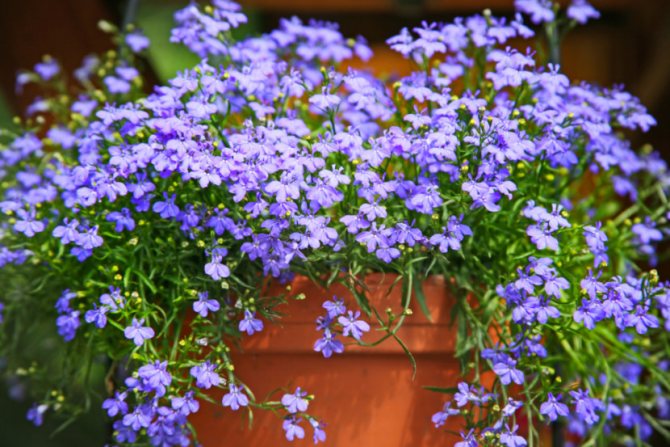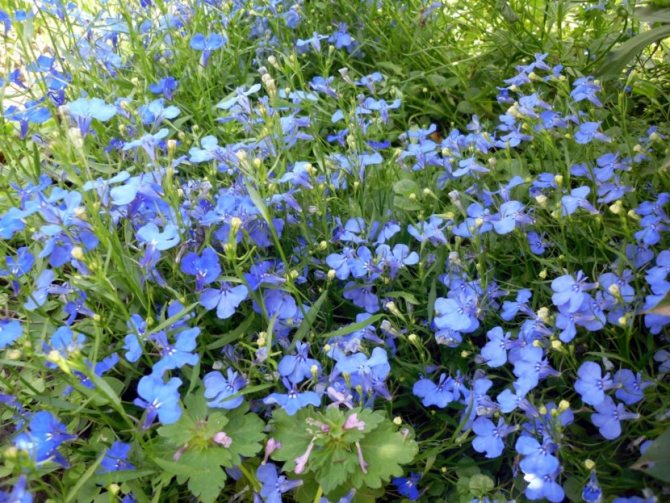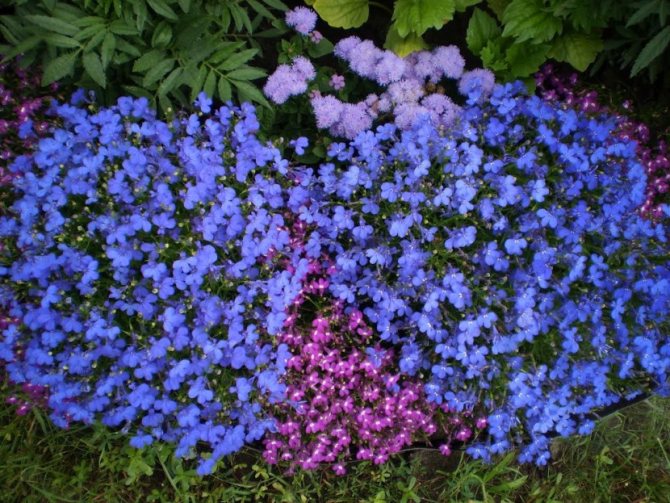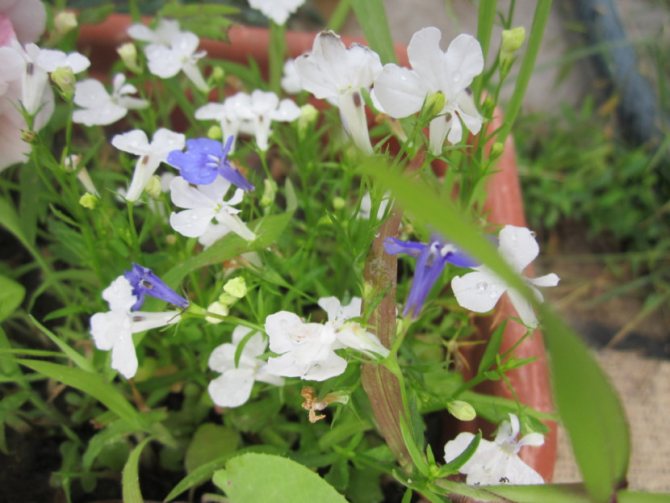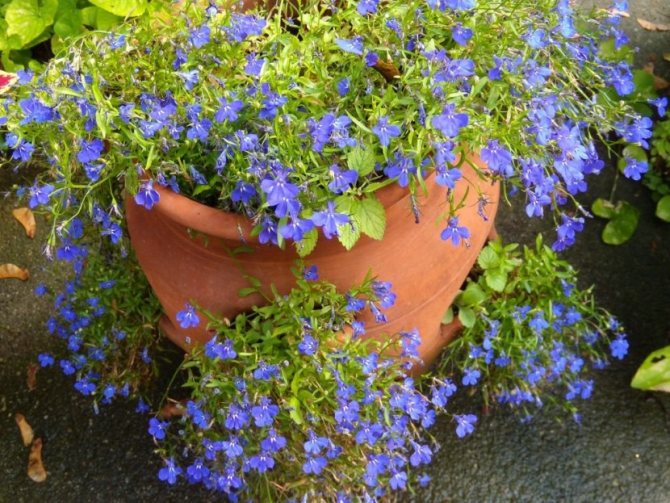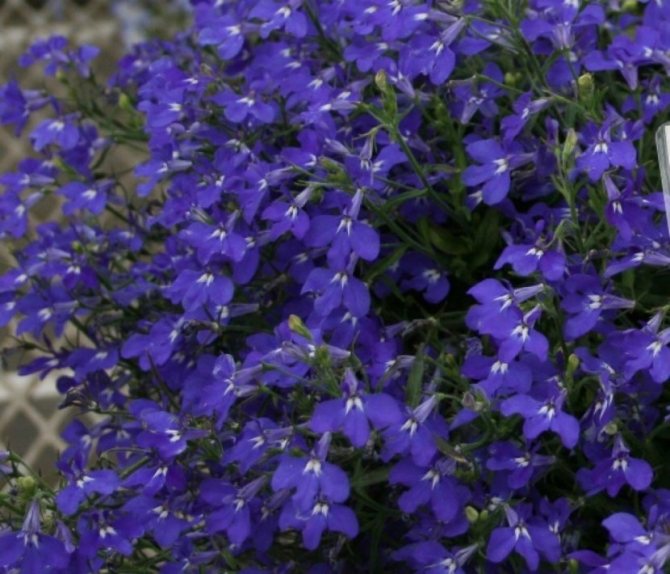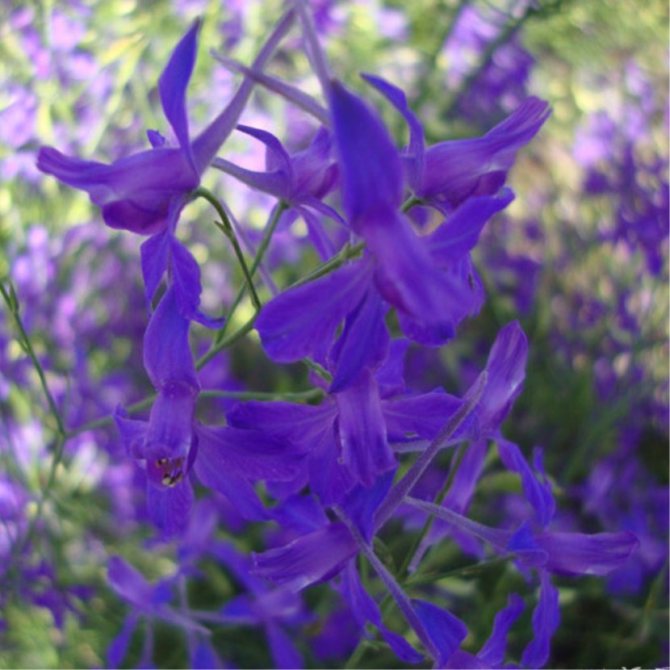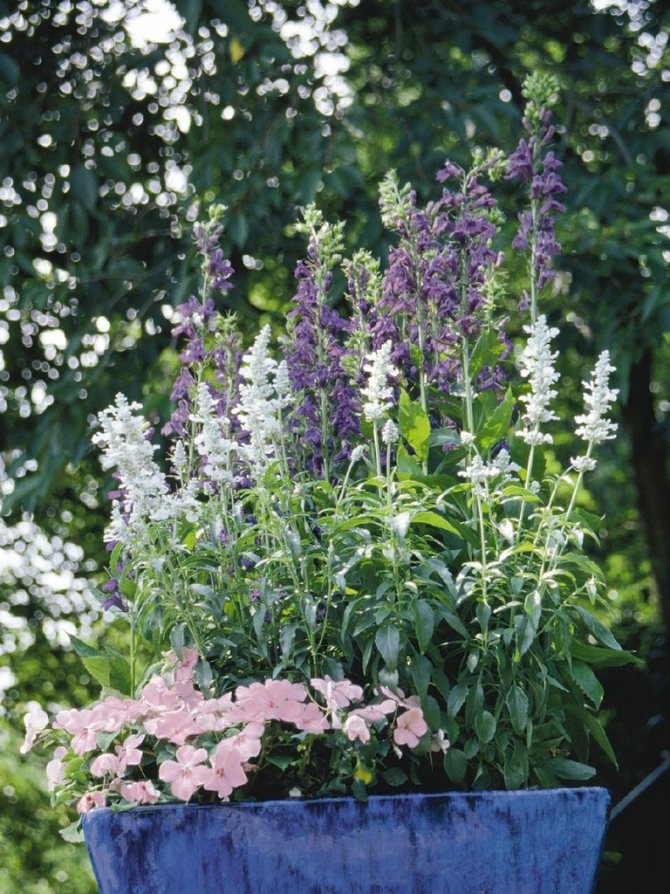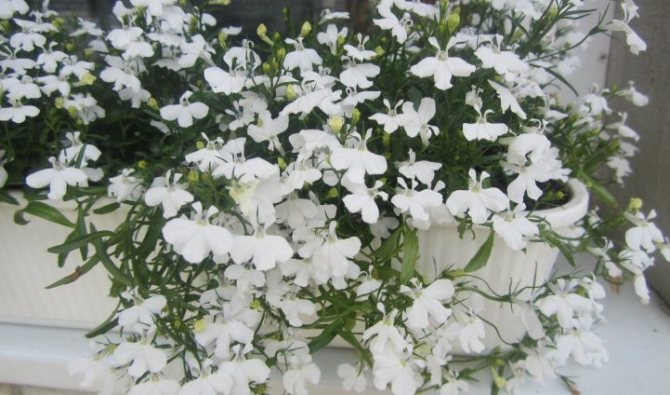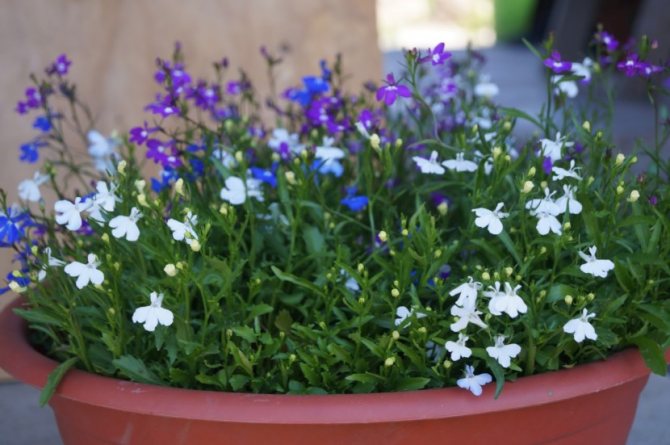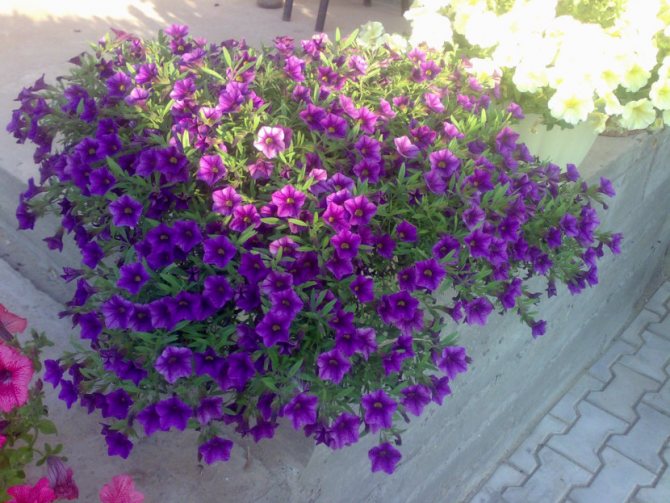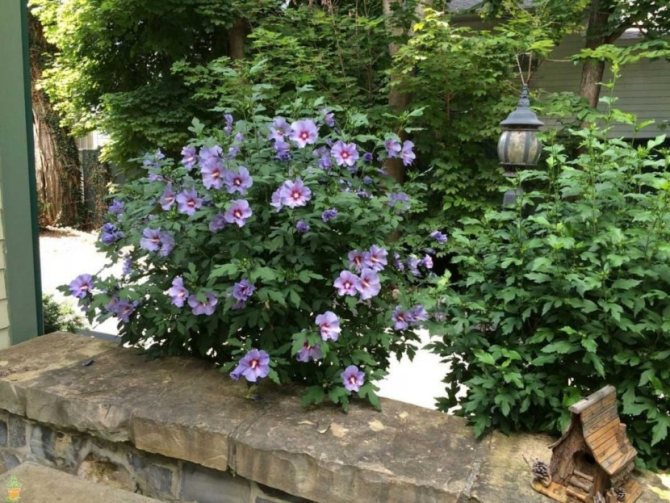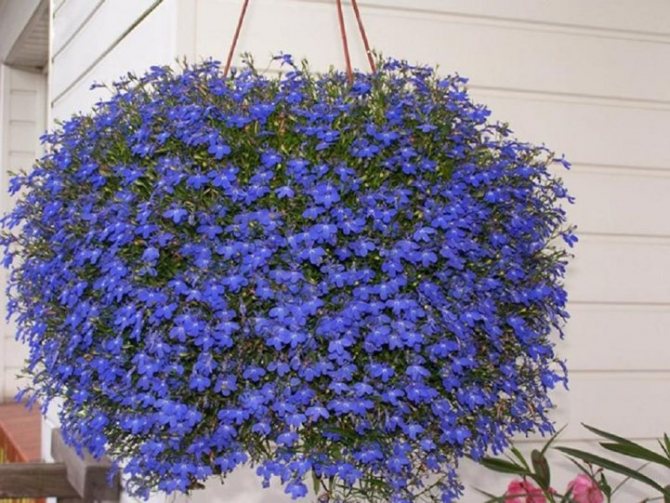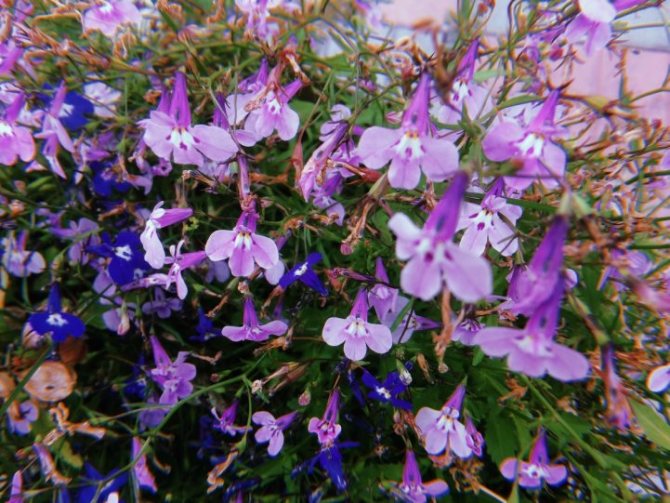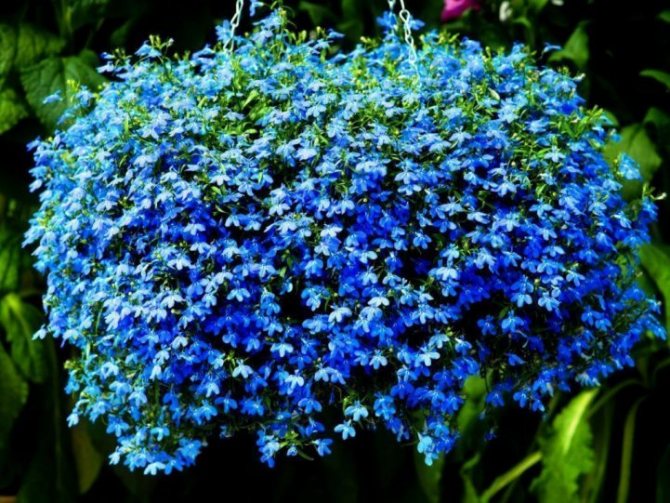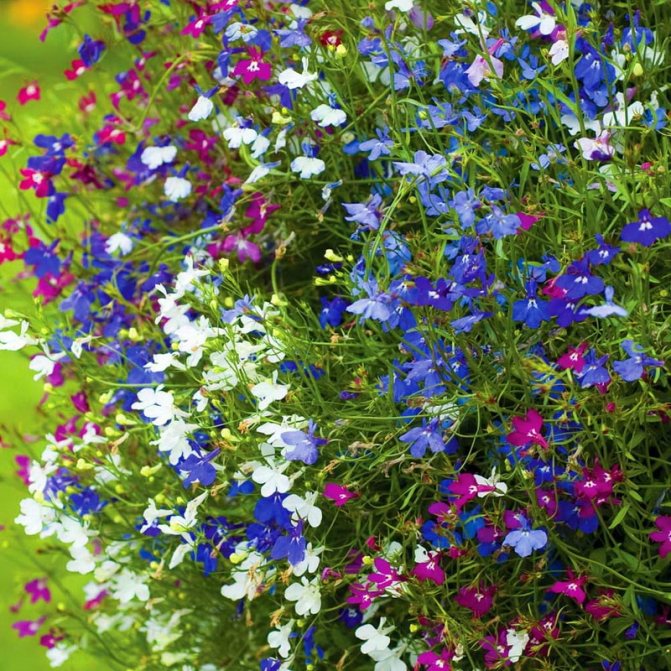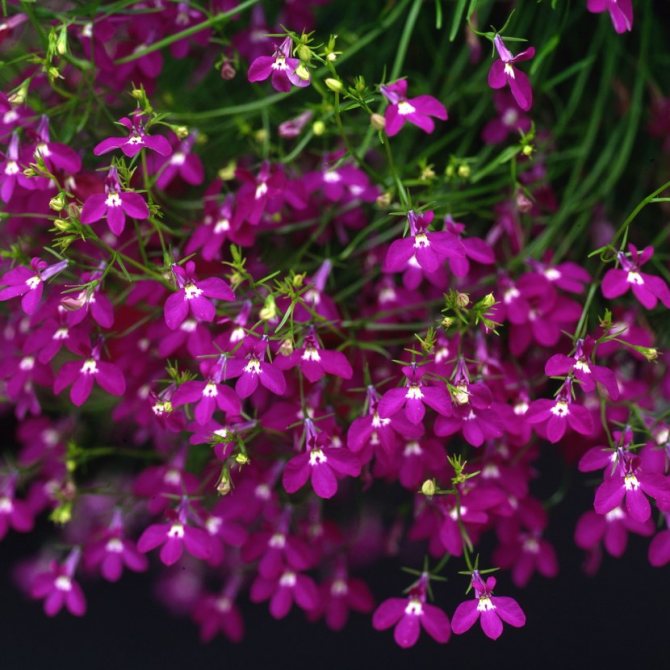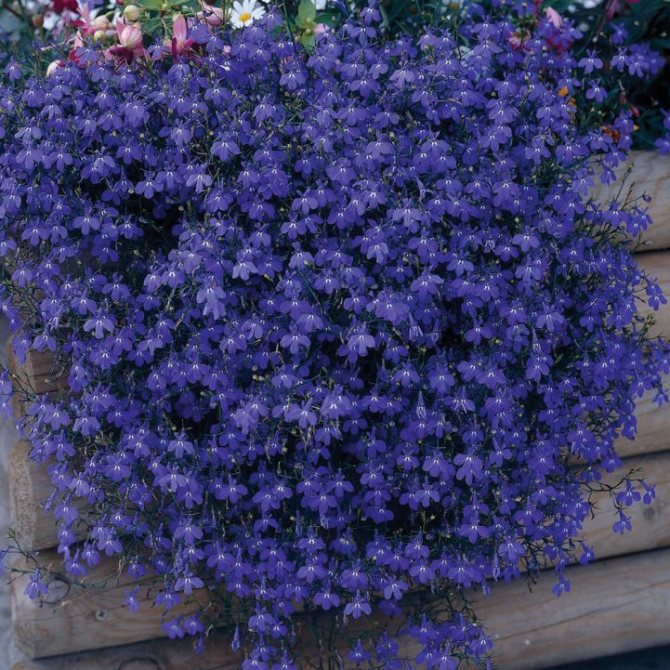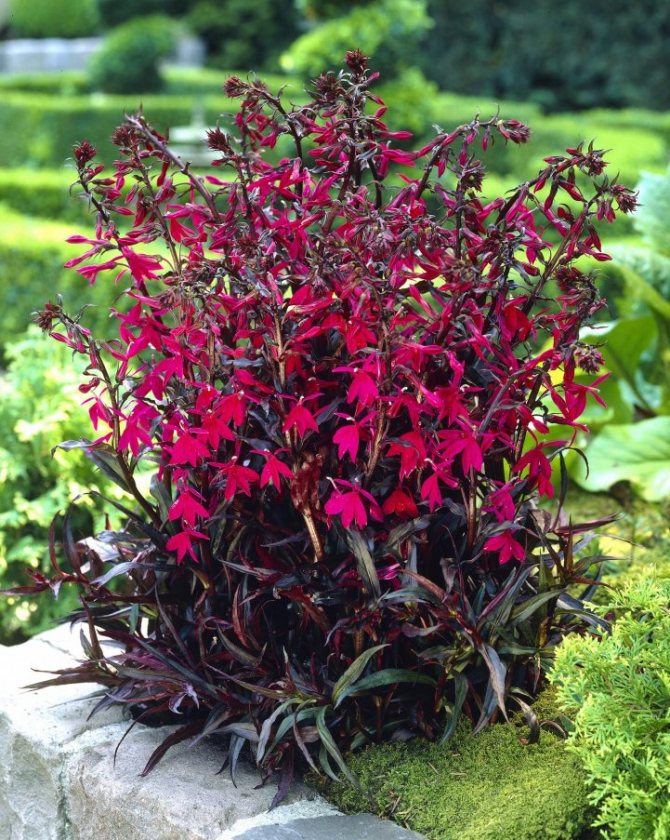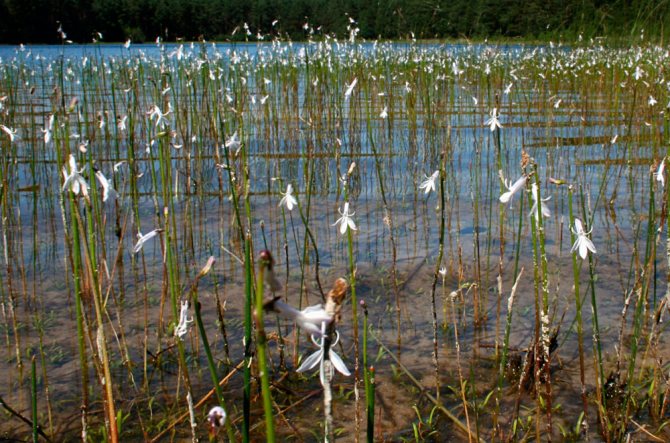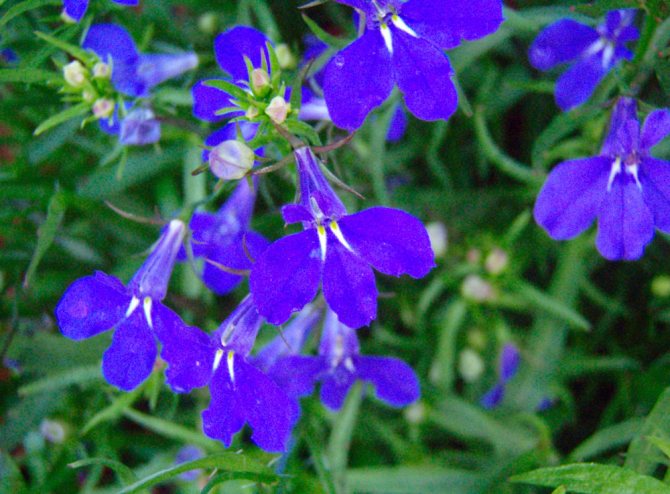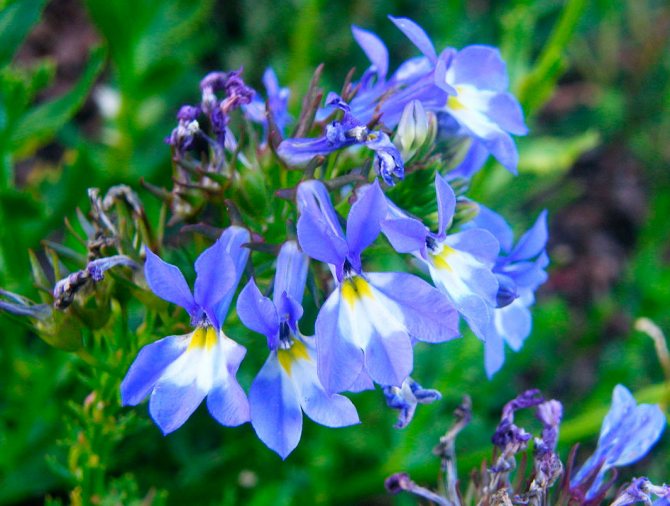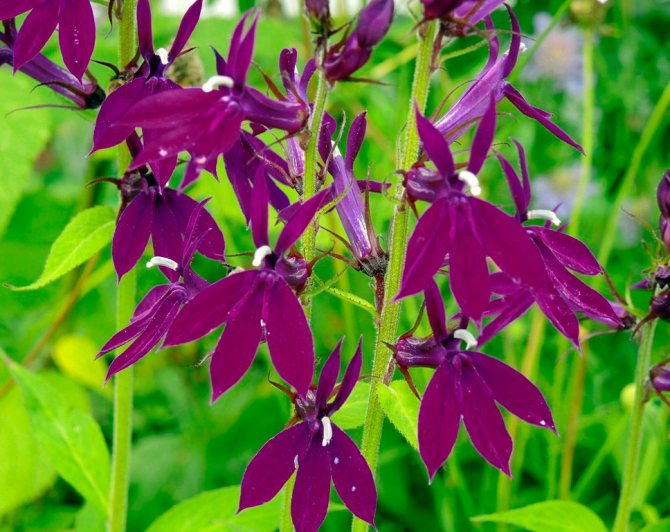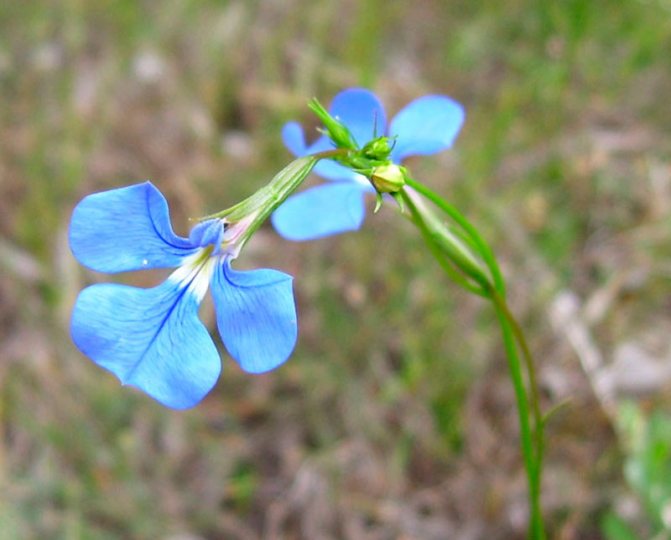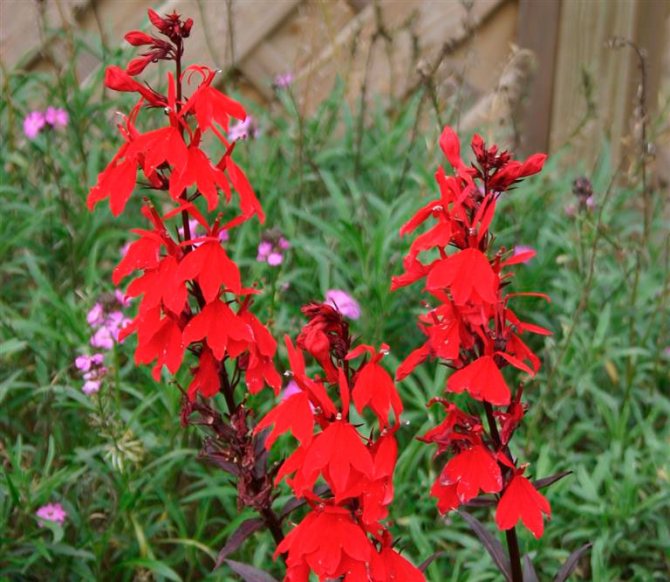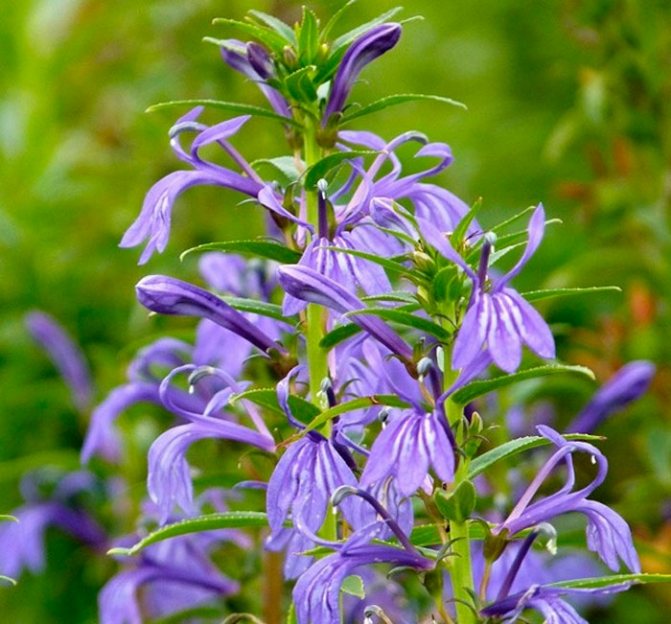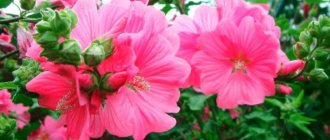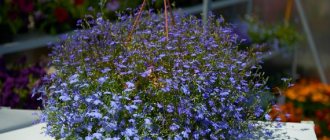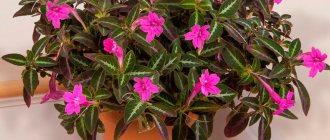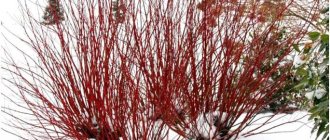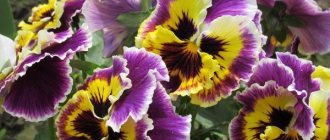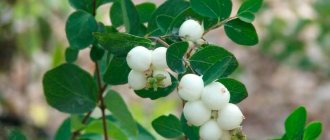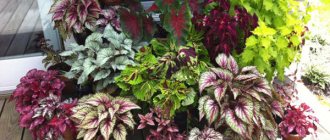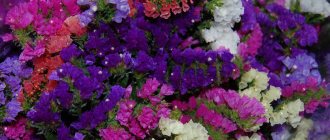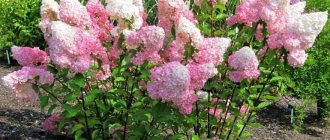Home »Flowers and plants
Flowers and Plants
Vladimir Serchenko

Planting and caring for a lobelia will be a pleasure if you know a few important rules for caring for it. And then these graceful flowers with lacy greenery and small flowers will delight the eye until autumn. Different varieties in one group look especially touching.
- Description
- Neighborhood: what colors are combined with
- Growing
- Vegetative reproduction
- Seminal
- Soil preparation
- Sowing dates
- Sowing
- Picking
- Fertilizers
- Before planting in the ground
- Varieties
- Ruby Falls
- Sapphire waterfall
- Emperor Willie
- Crystal palace
- Riviera
- Rosamund
- Niagara
- Fiery
- Cardinal
See also: When to plant seeds for seedlings? Seedlings at home |
Lobelia flowers: features
Lobelia is a perennial flower, part of the bellflower family, homeland is the south of African territory. Growing flowers consists in choosing the right place for planting.
Under natural conditions it can grow:
- On the stones;
- In wet ground;
- In temperate subtropics.
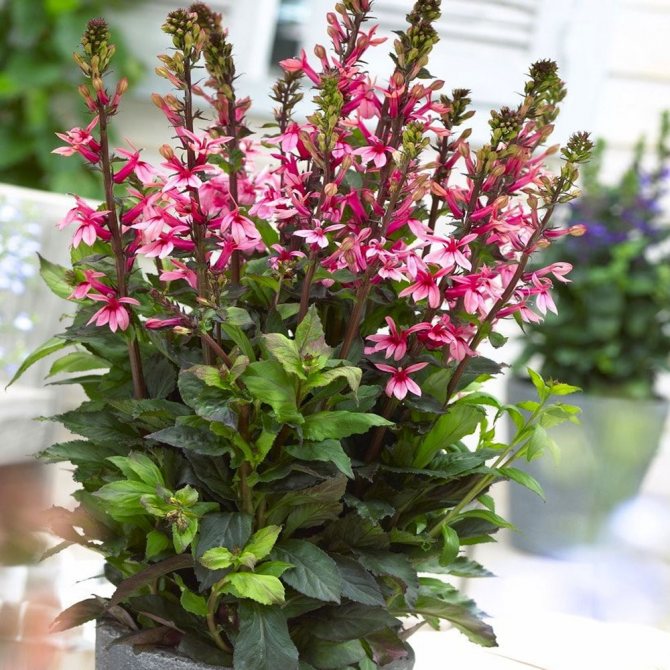

Cultivated types of lobelia are actively used in landscape design, and look spectacular on a flower bed. With its beauty, it provides a tremendous scope for creative manifestations - you can find a large number of photographs where a plant is a leader or part of a flower arrangement.
Growing lobelia from seeds: secrets and subtleties
Among flower growers, it is not customary to buy seedlings, growing your own is the height of skill, especially when it comes to whimsical plants, which include lobelia.
The first thing you need to do is purchase seeds. Seeds are:
- Prepared (pelleted) in granules, it is good to plant them directly in peat tablets, avoiding unnecessary picks. In addition, the granules contain a special composition that helps the seeds to germinate faster.
- Unprepared those. loose, of which there are a lot in the package, sowing such seeds is very laborious, does not guarantee the quality of seedlings, and then transshipment (picking) into separate pots will be required.
Based on the fact that lobelia is a plant that grows very poorly, seeds are planted in February for cultivation in the southern zone, for example, in the Southern Federal District, or in March for growing somewhere to the north, where the summer cottage season begins a little later. Sprouted seedlings require additional lighting (additional lighting), otherwise they may die.
Popular varieties of lobelia
Many plant varieties have spread throughout the planet. The most relevant type of lobelia is Erinus - it can grow not only in the garden, but also on the loggia, and in suspended pots.
The most popular varieties have the following description:
- Shiny lobelia - up to 750 mm in height. It is characterized by a varied color of foliage - from greenish to bright red.
- Gerardi - reaches 125 cm in height. A feature of the variety is the original spikelet inflorescences. The variety is frost resistant.
- Darlingoskaya - a mini-plant stretches upward only a few centimeters.
- Blue lobelia - spikelet inflorescences, in a bluish-purple color. The color starts in mid-summer. Among gardeners, it is not particularly in demand, since special care is needed for its growth.
- Purple - can grow as a separate flower, and become part of a flower arrangement. It develops well in swampy places, areas with wet soil. Can be planted on the shore of a reservoir, natural or artificial.
- Sessile annual - is a poisonous flower. It multiplies well by independent sowing and blooms already next year after planting.
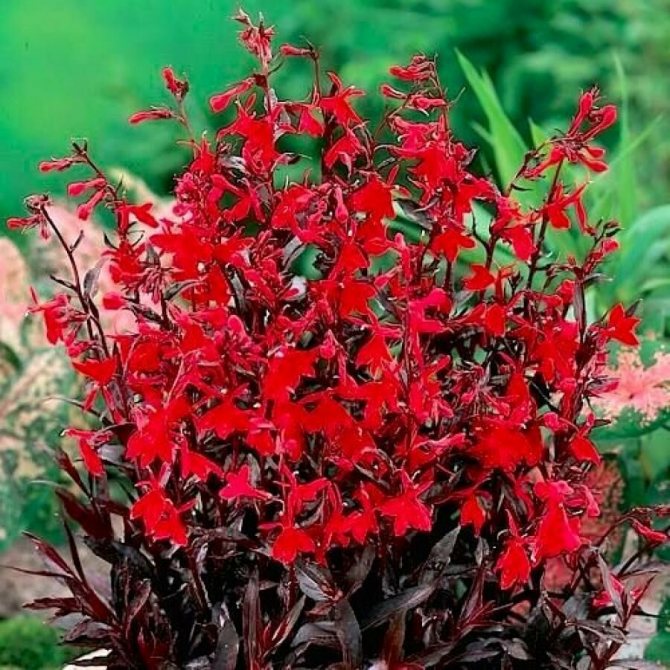

Also in demand are the varieties Liberia, lobelia white, climbing, blue, fiery, bush. Often planted varieties of the name, which are Swallow's Nest, Crystal Palace, Fountain. Pictures demonstrate all the beauty that ampelous lobelia possesses.
Description of ampelous lobelia
The plant is named after the 16-17 century scientist Matthias de L'Obel. He was a court doctor and botanist for King James I of England.
In its natural habitat, it is a tropical perennial plant. The leaves are small, arranged alternately on the hanging shoots. The plates are lanceolate, most often dark emerald in color.
Compact in size, but it blooms magnificently. The flowers are bisexual, so there is no need for artificial pollination. The buds grow densely along the entire length of the stems. The coloring is varied: from bright to pastel colors.
Ampel lobelia can be planted singly or in composition with other plants. She calmly tolerates any neighborhood and will perfectly complement any floral arrangement.
Breeding lobelia in the garden
Growing new shoots of a plant can be done in 2 ways - by seeds or by dividing the root system. It is easier for inexperienced gardeners to reproduce a flower by seeds. To obtain seedlings, you need to plant seeds in a greenhouse with the appearance of the first sun - at the end of the winter period or the beginning of spring. Planting seeds is superficial - the container with plantings should be covered with PE or glass. It is better that the bright, diffused sun falls on the boxes with seedlings. Reproduction is carried out with a small number of seeds - half a bag is enough to decorate one area.
Attention! For seedlings that have not yet matured, the symbiosis of dry soil and warm air is destructive - this will provoke the death of the plant.
Seeds need to be planted rarely - a dense planting will lead to a rapid stretching of the flower. To do this, mix them correctly with sand. Planting flower seeds is carried out in a pre-prepared soil. For this purpose, you can use the soil from the garden with the inclusion of humus and sand in the proportion of 10 to 1 to 10. The soil must be prepared in the autumn. It is not necessary to fertilize the soil for seedlings - there are enough useful elements in the seeds for the development of a new flower.
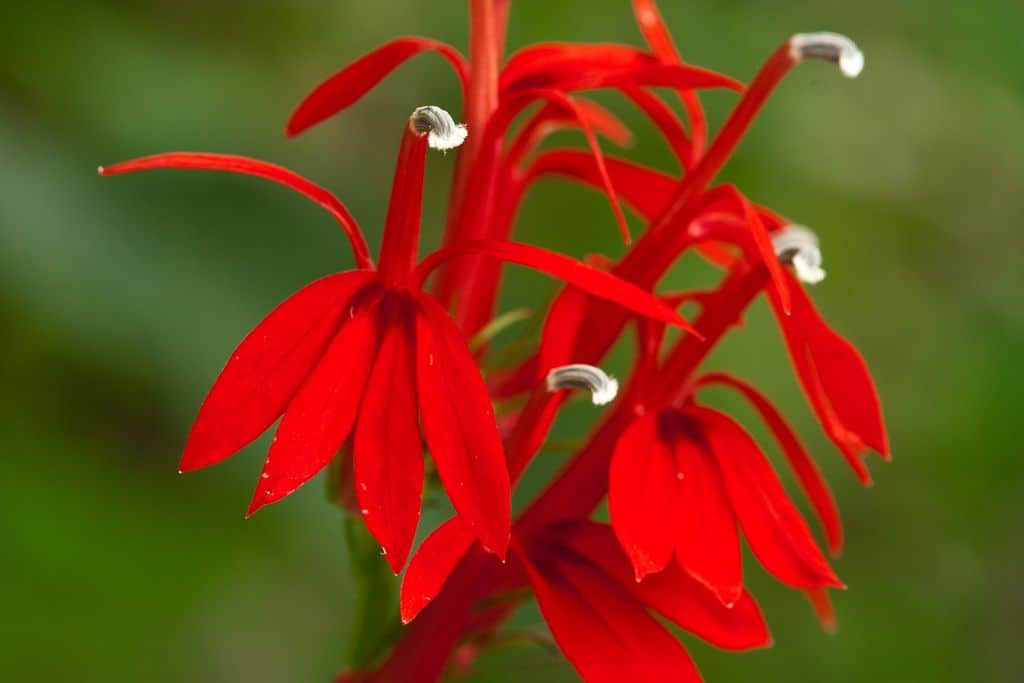

Attention! Reproduction by seeds makes it possible to store planting material for a long period - the seeds hatch well up to 3 years. The division of the root system is performed after the perennial has sprouted - in April.
For this:
- The bush must be dug up;
- Divide into several parts;
- Plant in ready-made holes.
Reproduction by division is used only for the purpose of preserving the properties of the variety.
Growing lobelia from special granules
If the gardener has not acquired a manual, then in the first year it is still better to start by planting granules in peat tablets, the result will be much better.
Before planting, peat tablets are soaked in water for 15 minutes, during this time, the tablet increases greatly, then you need to take the granule and place it in the recess in the tablet, but do not deepen it additionally. Next, you should put the tablets in cuvettes and cover with foil.
For irrigation, water is poured into the cuvettes, the water reaches the seeds through the peat. The hardened seedlings are transplanted directly with a tablet into peat pots.
Beautiful lobelia flower planting and care
The sprouts will appear one and a half to two weeks after planting the planting material. Moderate watering is very important for them.An excess of moisture at this stage can lead to a disease - "black leg". For this, water must be taken at a settled room temperature regime. To prevent condensation from forming, the sprouts must be systematically ventilated by opening the PE or glass.
Attention! It is impossible to water the seedlings under the root system; it is better to spray the seedlings from a spray bottle.
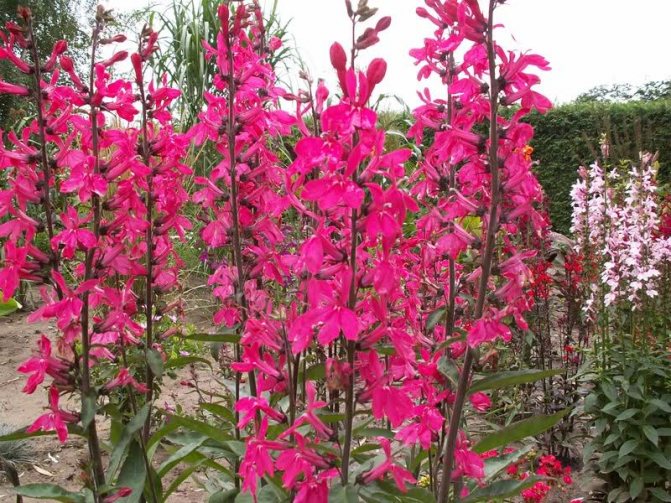

Until the stem part gets stronger, spray should be done carefully. A hardened plant must be dived before planting on the site. Diving is performed after the development of the first 3 cotyledonous leaves. To do this, you can use a special spatula or a toothpick. With the help of a special tool, 5 sprouts are picked up at a time, and transplanted into separate containers. Attention! Seedlings that have grown by 30 mm need to be pinched - because of this, adult plants will be strong and effective. Plant correctly in damp places filled with sun to the maximum. It is also possible to grow in a semi-shaded place, but if a dense shade covers the lobelia, it will begin to stretch, which will negatively affect the color.
Bushes grown in a shady location differ:
- Few colors;
- Not large flowers;
- Lack of brightness.
Growing lobelia is possible on loamy or loose soils. If the soil in the garden is of a different composition, you can make a nutrient mixture and pour it into the hole during planting. Since the flower has fibrous roots, the seedlings can be sent to small holes, the depth of which is no more than 250 mm. An interval of 150 mm must be observed between each of the pits. When growing a plant on the site, you should provide it with a good drainage layer. Before planting, you can pour expanded clay, broken brick and other materials into the hole that will drain excess water. Planting seedlings in a permanent place is carried out only at the beginning of summer - when the night frosts go away. In the garden, the plant can only tolerate minor cold snaps - up to -1 ° C.
Attention! To get strong bushes, planting the plant should be done in several bushes in one hole. The most experienced gardeners can grow lobelia from seeds immediately on the site, pouring them onto the snow, mixing with sand. The melted snow will create quality watering for crops. The sprouts will appear one and a half to two weeks after the snow cover melts. From the moment the roots appear until the very frost of lobelia, care is required. So, after the plant takes root on the site, its upper part must be pinched.
Lobelia can equally suffer from an excess of moisture and from drying out. Proper care will result in a spectacular luscious and long-lasting color. Lobelia blooms in the middle of summer and continues until the end of the summer period. When the first flowering leaves, the plant must be trimmed 70 mm. Such a departure will provoke the formation of new shoots, and the lobelia will bloom again. In late summer, the color process may become slower. To continue, it is necessary to water and loosen the ground abundantly.
Growing
Depending on the type of lobelia, it is suitable for all types of flower beds. But the most important purpose of this flower is to use it as an ampelous plant to decorate the front entrances to buildings and offices. You can plant lobelia in boxes and place them on terraces and balconies.
There are several varieties that especially emphasize the beauty of this flower, this is an ampelous group. But even small and spreading bushes look great in street vases and pots.
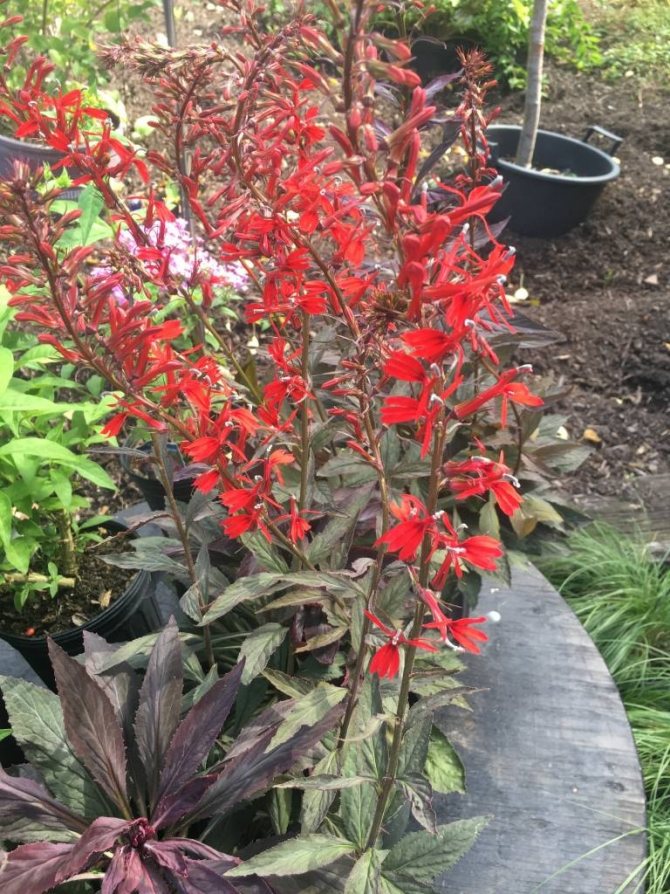

Lobelia in a flower bed
If you are a beginner, lobelia is quite moody in planting and caring. This means starting with simple shapes. For example, it has been experimentally found that varieties with blue, blue flowers and any of their shades survive much better and do not require excessive care.
Lobelia with white flowers is much more whimsical. This is understandable, because the progenitor of all modern varieties and hybrids has a blue tint. The breeders tried their best to create flowers so different in color, but they turned out to be not so viable.
Purple, pink and lilac varieties are considered the most capricious among amateur flower growers. And this means that you should not start your acquaintance with lobelia with them. Even if you like these unusual varieties, it is better to plant blue or blue lobelia at first.
back to menu ↑
See also: Alyssum: species and varieties of plants, sowing seeds in open ground and caring for a rainbow carpet on the site (130 Photos) + Reviews
Vegetative reproduction
Lobelia at home, grows wild like a perennial... In countries with warm climates, it tolerates wintering in the ground. Its upper part is cut off or it dies off, and the roots remain to winter in the ground. In the spring, the overwintered plant again begins to grow new shoots, and then bloom.
Lobelia can be propagated in two ways: vegetatively or with seeds. Vegetative reproduction involves dividing the mother bush. This can be done with a shovel or any sharp instrument.
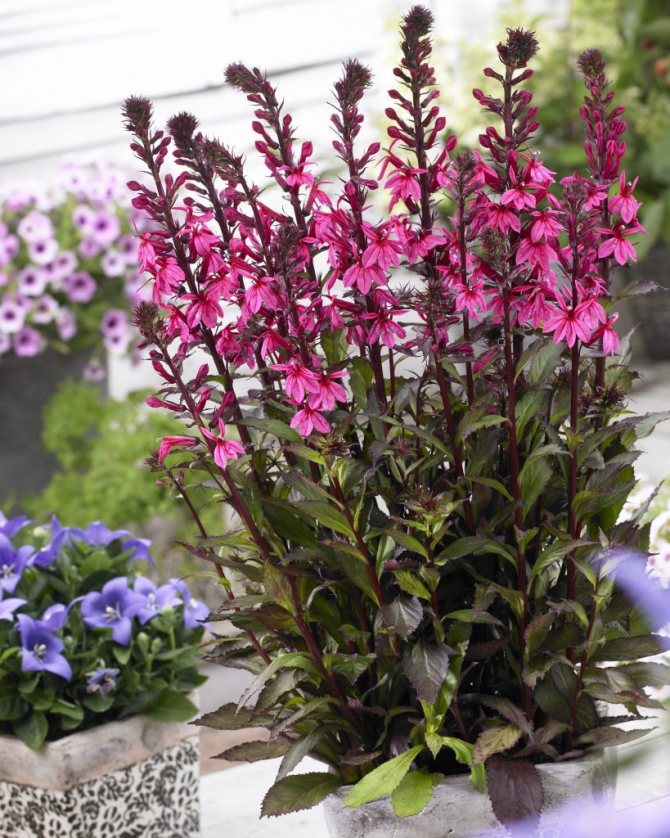

Perennial Lobelia
For the winter, lobelia bushes can be sent to winter on the balcony or in the cellar... For this you need to prepare. You will need a shovel, bag or box.
The plant is spilled before digging. To preserve the rhizomes, lobelia bushes are dug out, capturing as much of the root system as possible. The earth is not shaken off so as not to injure it. The plant, together with an earthen clod, is placed in a pot, box or bag.
After that, the lobelia is taken to a room where the temperature does not drop below zero. It can be an insulated balcony or loggia, a cellar or a storage room. Before sending the lobelia for "storage", you need to cut off all the shoots, leaving no more than 7 cm. In winter, the flower must be periodically moistened, and in early May, planted in the garden, after dividing the mother bush into several.
back to menu ↑
Read also: Fuchsia - Growing, Care, Transplanting, Reproduction at Home (50+ Photos & Videos) + Reviews
Seminal
Seed propagation does not imply self-collection of seeds. Dozens of varieties and hybrids of this plant are now on sale.
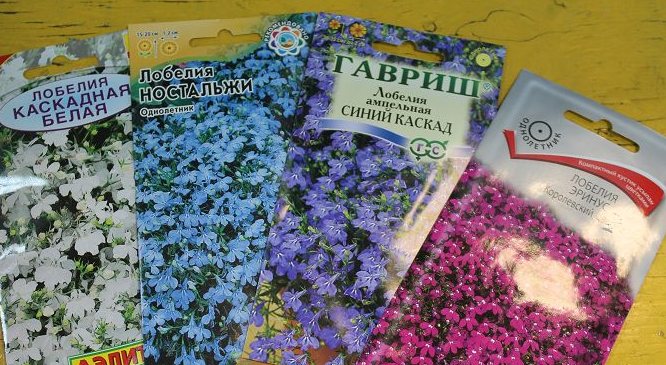

Lobelia seeds
Those who do not have experience with growing lobelia may prefer purchased seedlings for the first time. Having coped with planting in the first year, in the second - you can try your luck in sowing.
back to menu ↑
See also: How to create beautiful flower beds and flower beds in the country with your own hands? (220 fresh photos and video ideas) + Reviews
Soil preparation
Lobelia does not like overly nutritious soil. This is her feature.
Therefore, neither when growing seedlings, nor when planting in open ground, you do not need to overdo it with fertilizers.
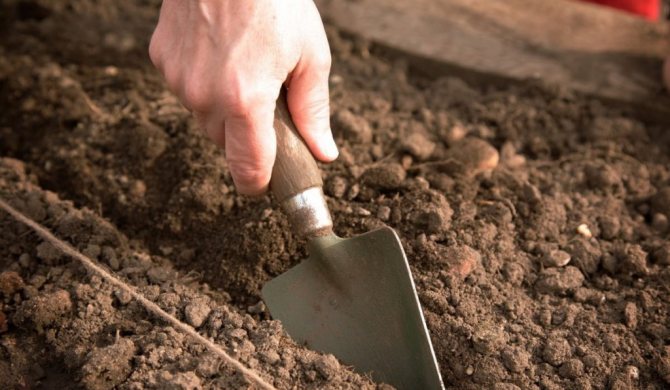

Soil preparation
If lobelia is placed on rich soil, it will grow rapidly. Building up a lush green mass, it blooms very badly. In addition, flowering may be delayed by at least 2 weeks. And on poor soils, on the contrary, flowering simply amazes with splendor.
You can prepare for seeding in two ways:
On your own. To prepare the ground, you need to take care of it in the fall.
To compile it, you will need:
- loose garden soil
- river sand
- vermiculite
- ash
- superphosphate
Sand is needed 2-3 times less than garden land. He is taken only in those places where it will be known for sure about his safety. For additional prevention, the sand is calcined in an oven heated to 200 C for 25-30 minutes.
Vermiculite is used for looseness, saturation of the soil with air and additional mineral nutrition. Ash is a wonderful natural source of phosphorus and potassium, as well as calcium and other substances.
Ash is added in sifted form in the amount of: one half-liter jar per bucket of potting soil.Superphosphate is added 3-4 matchboxes to a bucket of prepared earth. All ingredients are thoroughly mixed.
Buying a mixture. Purchased packaged land is different in composition and purpose. If you have large plantings, we recommend that you first test the mixture by purchasing a trial bag.
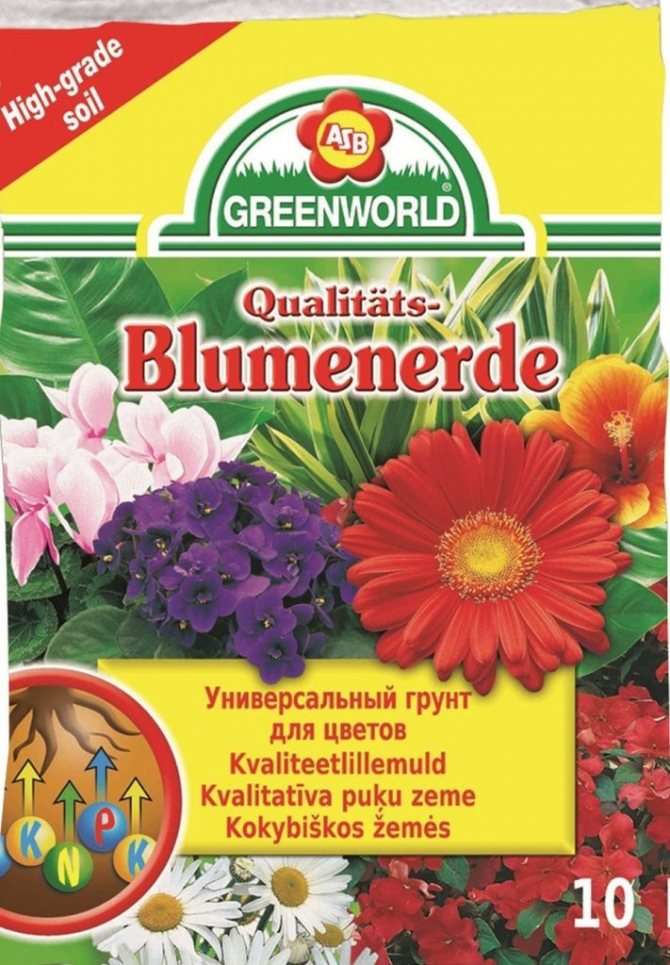

Ready mix for flowers
The fact is that some unscrupulous producers put high moor peat instead of fertile land, which does not absorb water at all, since it is a natural filter.
This is very common, especially among cheap soils. It makes no sense to grow anything in such a "land". When choosing, you do not need to be guided only by a low price; it is best to first read reviews on the Internet in specialized forums.
For planting lobelia, special soil for violets may be suitable. It is not so "rich", loose and contains sand. This is exactly what you need.
Before pouring soil into sowing trays, you need to know:
- utensils for planting seedlings must have drainage holes
- those bowls are best suited, the sides of which have a height of 7-8 cm
- even if the sides are slightly higher, the soil should not be poured above 5 cm, otherwise it may sour
Before sowing, arm yourself with markers, beacons or a notebook where you will make notes about the varieties planted. You will also need a bag to cover the crops for the first time to maintain moisture. The earth, after you have poured it into the prepared containers, must be left so that it settles a little.
Lobelia climbing: further care and fertilization
The flower culture is not particularly demanding on the land. Loves loams with neutral acidity. On oily soils and with abundant fertilization, lobelia blooms worse, abundantly growing greenery. The main thing is that the earth must be air and water permeable. If the lobelias grow in planters or hanging containers, a good drainage layer is needed. If there is no thought in the plans to grow the plant self-seeding, at the end of the color, the boxes with seeds will need to be collected from the site.
Attention! Growing a plant in winter not on a plot, but on a windowsill, you can make it bloom all year round.
This will make it possible to observe bright flowers not only in photographs, but also live.
Important:
- In winter, the plant also needs care - despite the fact that many varieties are resistant to low temperatures, in winter it should be properly covered with a dense layer of fallen leaves.
- In advance, you need to cut off the stem part, leaving an end 20-30 mm high above the ground. Fertilization also matters.
- Any complex mineral composition can be used as fertilizers.
The flower culture blooms throughout the summer, and when pruning or removing the inflorescences, which have faded in the fall. In the sun, flowering is most magnificent. Fruits: seed capsule with very small seeds. Germination - 3 years after harvest. Pests and diseases: not identified.
Seedling care, transplanting
Seedlings should appear in 10-15 days, after which they need to be ventilated, the main thing is patience, you cannot remove the film for a long time, the airing time is increased to avoid drying out and death of the seedlings, because gradually even a slight dryness will kill the seedlings.
Transplanting into peat pots is done when 3 to 4 true leaves appear. When diving, it is necessary to gather caution and patience. If the roots of the seedlings are strongly intertwined, in no case should they be torn apart, they will have to be planted in the ground.
After transplanting, the seedlings must be watered and maintained at a strict temperature: 20-22 ° C. It must be remembered that lobelia seedlings accept waterlogging well, but the slightest lack of moisture can destroy all efforts, the sprouts become thinner and die.
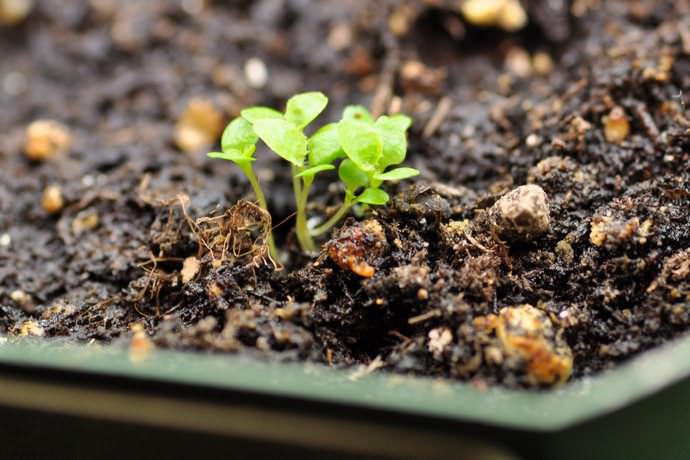

Compositions with fire lobelia with names
Perennial lobelia can decorate any flower arrangement or flower bed.Perennials of flower culture can be an excellent addition to the original artificial pond or alpine slide. In design art, it is correct to use plants of dwarf varieties - they will not suffer so much in windy times.
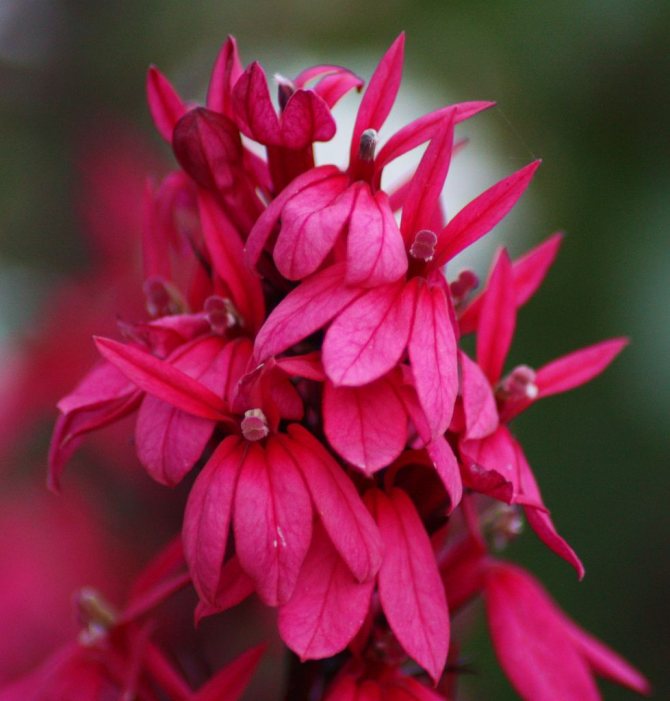

In a flower arrangement, the combination of lobelia with the following plants looks great:
- Marigold;
- Petunia;
- Pelargonium;
- Matricaria;
- Balsam.
It must be taken into account that the neighboring plants must have the same watering requirements.
So, with little effort, you can get a colorful and original plant on your garden plot. Having transplanted lobelia into a pot for the winter, you can observe its flowering all year round.
How to choose a variety
Lobelia came to Europe from North America and southern regions of Africa. Today, this flower is ubiquitous; it grows on almost all continents of the earth. Botanists attribute lobelia to the Kolokolchikov family, highlighting more than three hundred species of this plant.
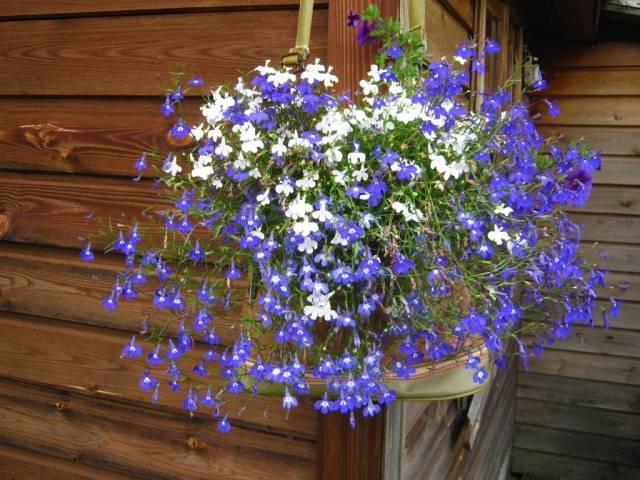

There are several varieties of this plant, differing primarily in the height of the shoots and the shade of the inflorescences. Most often, domestic florists grow:
- bush lobelia (or Erinus), which grows in low balls, covered with a lot of small flowers;
- an ampelous variety, the bushes of which are looser and climbing, there are not so many inflorescences on them as on Erinus.
Shrub lobelia is suitable for planting in flower beds and in various landscape compositions (on an alpine slide, for example). But ampelous varieties will decorate hanging pots, balcony boxes, window sills, suitable for growing in flowerpots and pots.


Growing an ampelous variety is somewhat more difficult than a bush one. She is more whimsical and often dies due to improper care. Practice shows that the most persistent are those types of ampelous lobelia, the inflorescences of which are blue-blue in color. The white variety rises more slowly and develops worse, but it is also quite suitable for novice florists. But it is better to refuse the purple or lilac variety - they are very moody and rarely give abundant flowering.
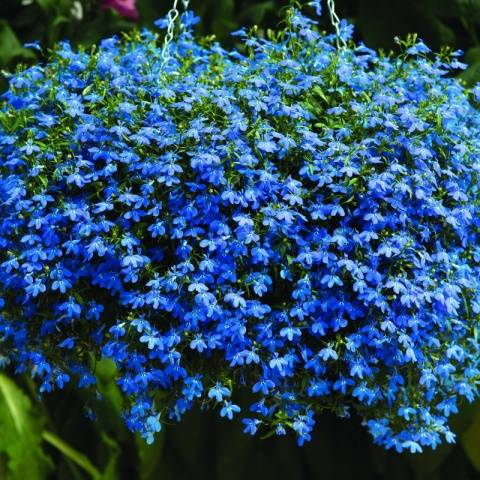

The appearance of ampel colors is very characteristic:
- stems are branched, angular;
- shoots are reddish;
- hanging stems, reaching a length of 50-60 cm;
- leaves are shiny, dark green, small, lanceolate;
- inflorescences are two-lipped, small in size.
Landing in the ground
Moderately fertile and loose soils are most suitable for lobelia. Transplanting seedlings into open ground or into pots and pots is carried out in late spring (second half of May).
To land in the ground, you need to choose a calm, warm day. First, the seedlings should be placed in the shade; then in partial shade; after that you can put it in the sun for several hours.
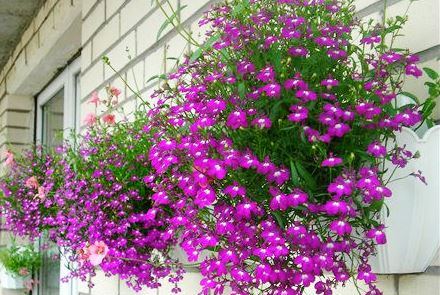

Planting a quarter meter later will result in separately growing bushes. Planting every fifteen centimeters will ensure the formation of a complete bush. If the weeds do not drown out, the plant can grow from fallen seeds.
Diseases and pests
The flower practically does not get sick, except for the black leg. If the disease appears, you need to quickly solve the problem. To do this, remove damaged plants, otherwise you can lose all lobelias. They stop watering the soil, and then sprinkle it with sand, which was previously steamed and watered with a pink solution of potassium permanganate.
If the leaves darkened on the lobelia, then this is due to the development of fungal diseases: powdery mildew or fusarium. First, spots appear on the leaf plates, which grow rapidly. As a result, the leaves fall off. Before starting treatment, you first need to cut off the damaged leaves, and then process the plantings. Colloidal sulfur or other fungicides can be used.
If the leaves become sticky, then the ampelous lobelia is affected by the scabbard or mealybug. Processing is carried out with laundry soap.
All other problems are related to care errors:
- Curling the leaves. Insufficient watering, long drought.
- Red or purple leaves. The reason lies in the sharp difference between day and night temperatures. If possible, then on cold nights the plants are covered.

